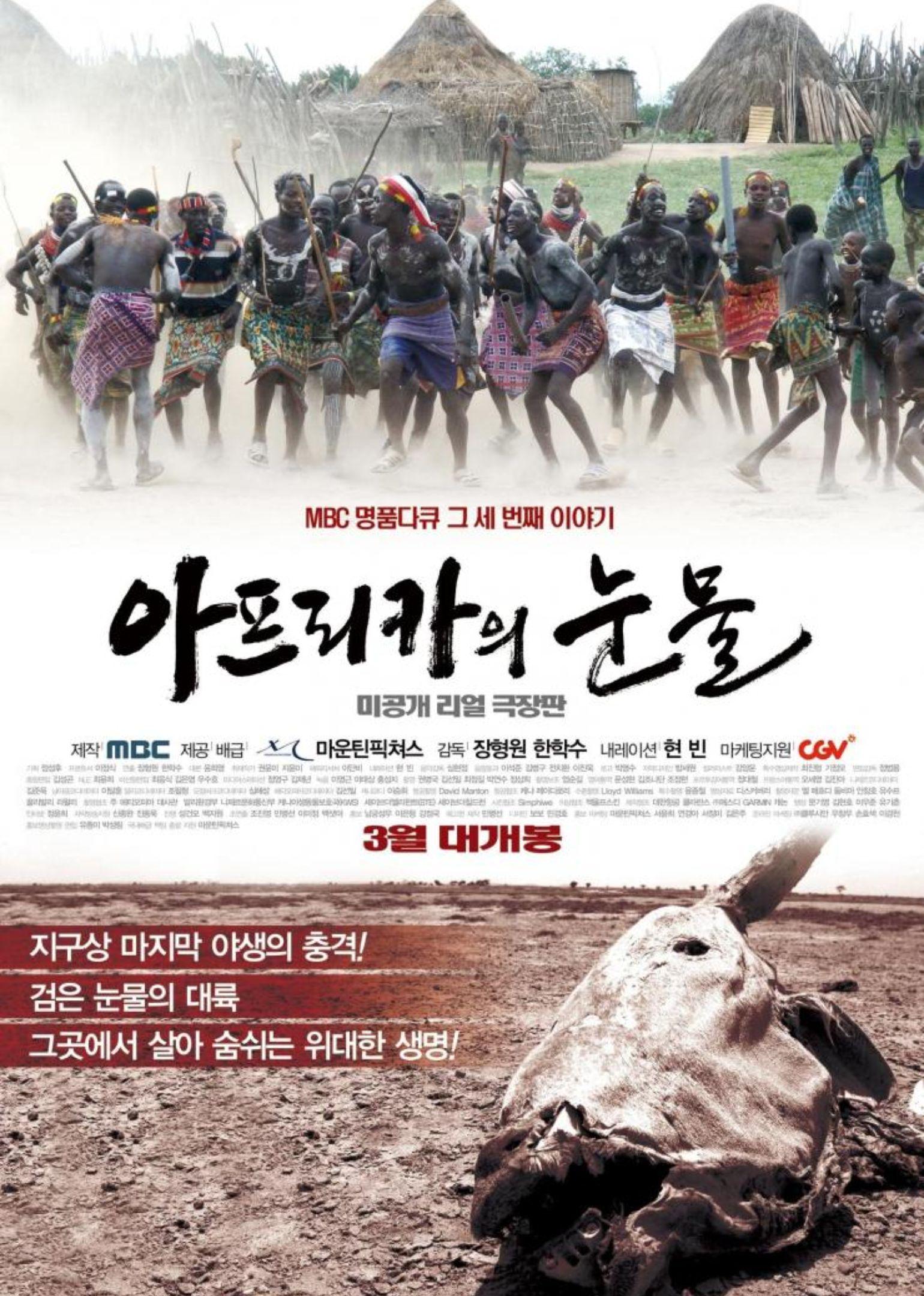
Tears of Africa
Tears of Africa is a compelling South Korean documentary that serves as the third installment in MBC's acclaimed "The Tears of the Earth" series, following Tears in the Arctic and Tears of the Amazon. This film ventures deep into the African continent, offering an intimate look at its diverse cultures, environmental challenges, and the resilience of its people. Narrated by renowned actor Hyun Bin, the documentary provides a heartfelt and immersive experience. The filmmakers spent over 307 days traversing deserts and forests, engaging with tribes like the Fulani and Karo, capturing their daily lives, rituals, and the stark realities they face amid environmental hardships. The narrative delves into pressing issues such as water scarcity, droughts, and the impact of global warming on Africa's wildlife and agriculture. It also highlights the cultural richness of the continent, showcasing unique traditions like the male beauty pageants of the Fulani tribe and the coming-of-age ceremonies of the Karo people. Through its stunning visuals and poignant storytelling, Tears of Africa not only raises awareness about environmental and social challenges but also celebrates the enduring spirit of African communities. The documentary encourages viewers to reflect on global environmental issues and the interconnectedness of humanity.
Details
🙂 Native Title: 아프리카의 눈물 (Apeurikaui Nunmul)
🌎 Also Known As: Tears of the Earth: Africa
🎭 Genres: Documentary
🏷 Tags: Africa, Environmental Issues, Cultural Exploration, Survival, Tribes
✍ Screenwriter: Yoon Hee-yeong
🎬 Directors: Jang Hyeong-won, Han Hak-soo
🇰🇷 Country: South Korea
🎬 Release Date: March 24, 2011
📺 Original Network: MBC (Munhwa Broadcasting Corporation)
⏰ Duration: 85 minutes
🔞 Content Rating: Not Yet Rated
Best Scenes
-
-
Water Scarcity Struggles: The film captures poignant moments of African communities facing severe water shortages, highlighting daily challenges and resilience. Korea Times
-
Wildlife Encounters: Intimate footage showcases interactions between humans and wildlife, emphasizing the delicate balance of coexistence.
-
Cultural Ceremonies: Vivid portrayals of traditional rituals offer viewers an immersive experience into the continent’s rich cultural tapestry.
-
Desert Survival: Scenes depicting life in arid regions underscore the adaptability and endurance of local populations.
-
Environmental Devastation: The documentary presents stark visuals of deforestation and its impact on both the environment and indigenous communities.
-
Filming Locations
-
Sahara Desert: Expansive shots highlight the vastness and challenges of desert life.
-
African Rainforests: Lush greenery contrasts with arid regions, showcasing biodiversity.
-
Savannah Plains: Open landscapes illustrate the habitats of various wildlife species.
-
Indigenous Villages: Intimate settings provide a glimpse into daily life and traditions.
-
Watering Holes: Critical gathering points for both humans and animals, emphasizing water’s importance.
Visual Design and Costumes
-
Traditional Attire: The film showcases vibrant clothing, reflecting cultural identities.
-
Natural Landscapes: Stunning cinematography captures Africa’s diverse terrains.
-
Wildlife Imagery: Close-up shots of animals in their habitats enhance visual storytelling.
-
Ceremonial Decorations: Detailed visuals of body art and ornaments highlight cultural expressions.
-
Contrast in Environments: Juxtaposition of urban and rural settings underscores developmental disparities.
Themes and Messages
-
Environmental Conservation: The documentary emphasizes the urgency of protecting natural resources.
-
Cultural Preservation: It highlights the importance of maintaining traditional practices amidst modernization.
-
Human-Wildlife Relationship: The film explores the interconnectedness of communities and their surrounding fauna.
-
Survival and Resilience: Stories of overcoming environmental hardships are central to the narrative.
-
Impact of Climate Change: The documentary sheds light on how shifting climates affect ecosystems and livelihoods.
Interesting Facts
-
Part of a Series: Tears of Africa is the third installment in MBC’s “The Tears of the Earth” series, following Tears in the Arctic and Tears of the Amazon. Korea Times
-
Extensive Filming Duration: The crew spent over 307 days capturing footage across various African regions.conunpack.com+3linkedin.com+3Korea Times+3
-
Narration: The documentary is narrated by renowned South Korean actor Hyun Bin, adding a familiar voice for Korean audiences.
-
Cultural Immersion: Filmmakers lived among indigenous communities to authentically portray their stories.
-
Environmental Advocacy: The film has been used to raise awareness about global environmental issues and the need for sustainable practices.
Awards
Tears of Africa (2010), the third installment in MBC’s “The Tears of the Earth” documentary series, does not appear to have received specific awards. While the series has been acclaimed for its high-quality production and impactful storytelling, there is no record of this particular installment receiving distinct accolades.
Real-Life Loves on Set
There are no public records or reports indicating that any romantic relationships developed among the cast or crew during the production of the Korean documentary Tears of Africa (2010). The film’s focus remained on its narrative, and no off-screen romances have been documented.


